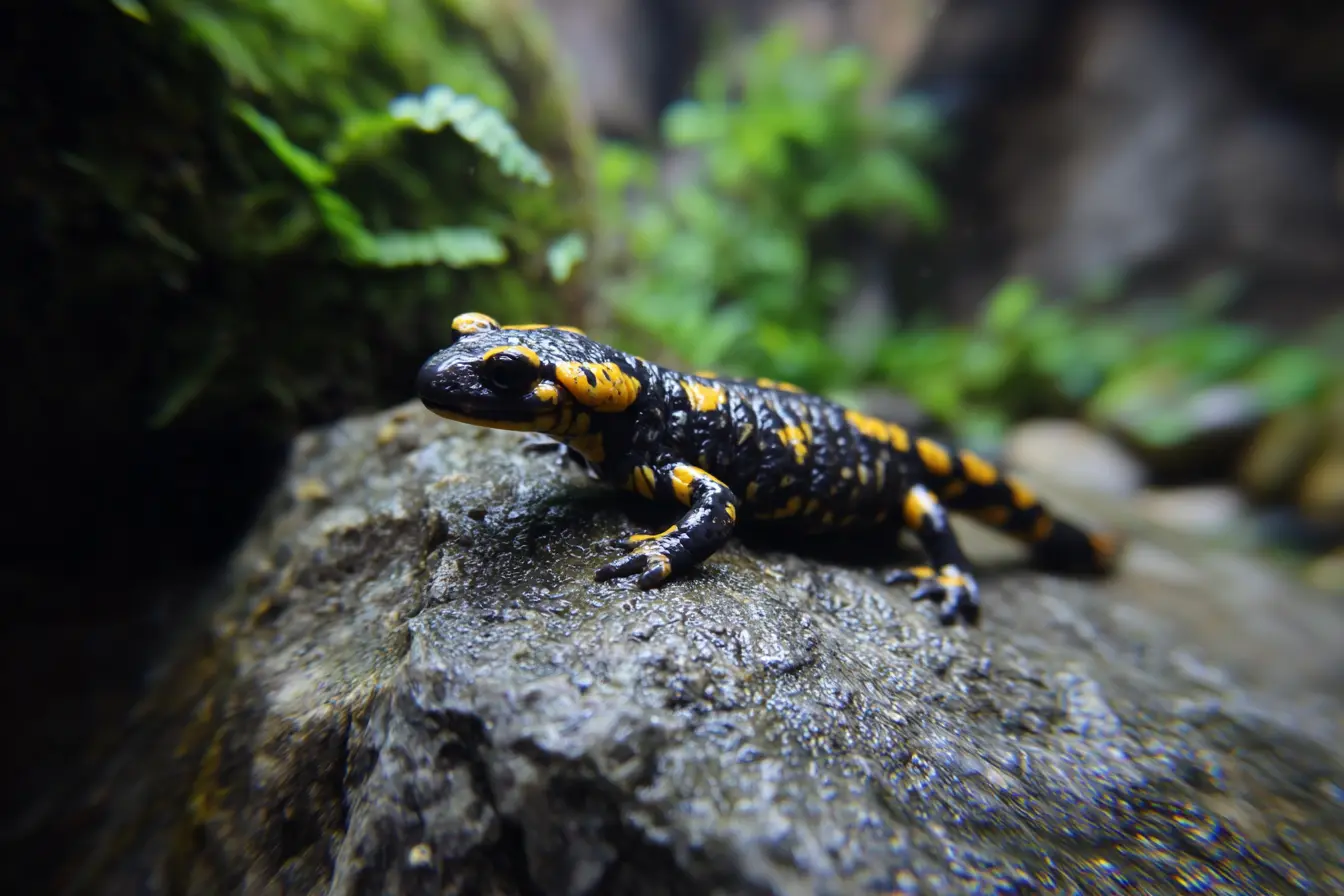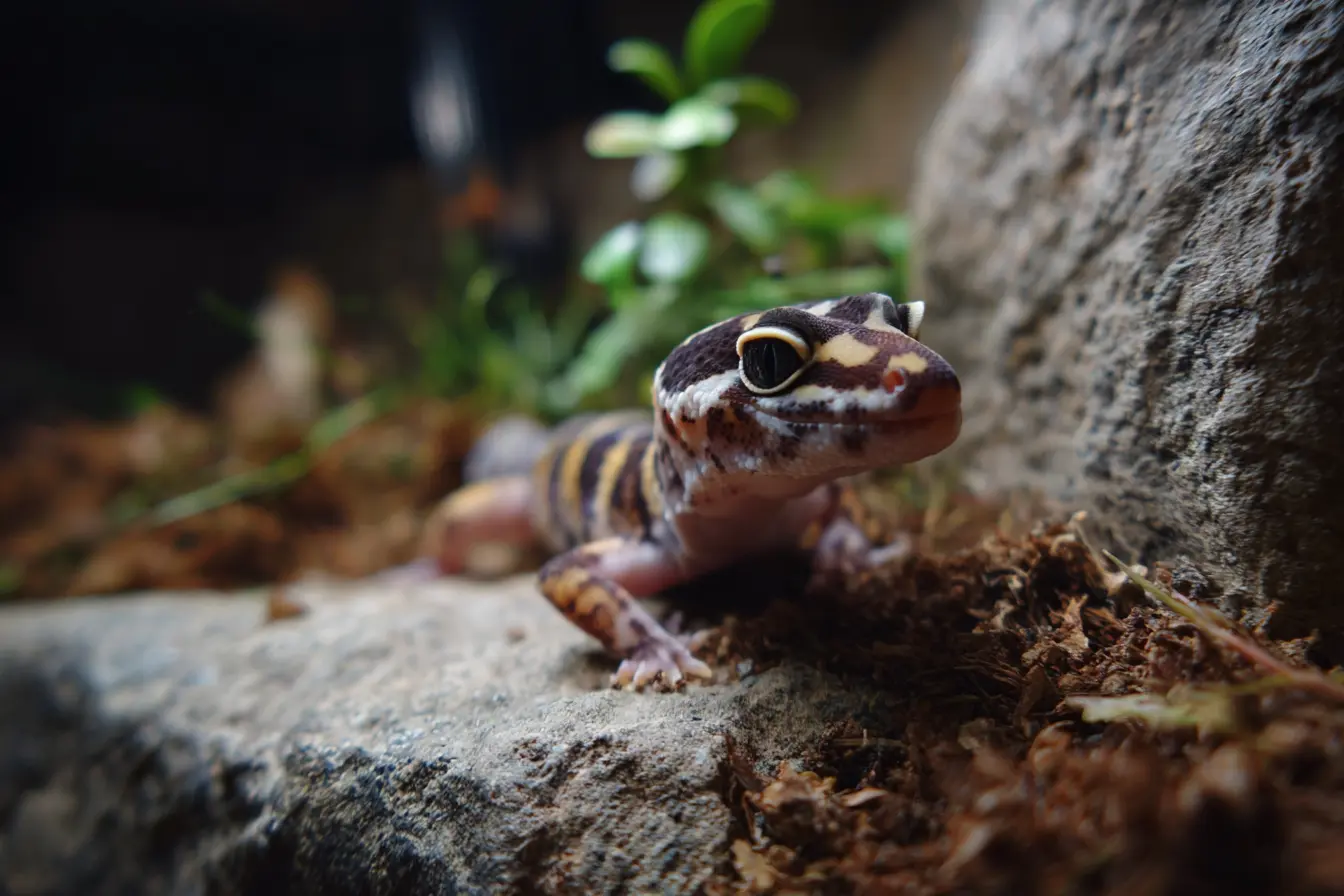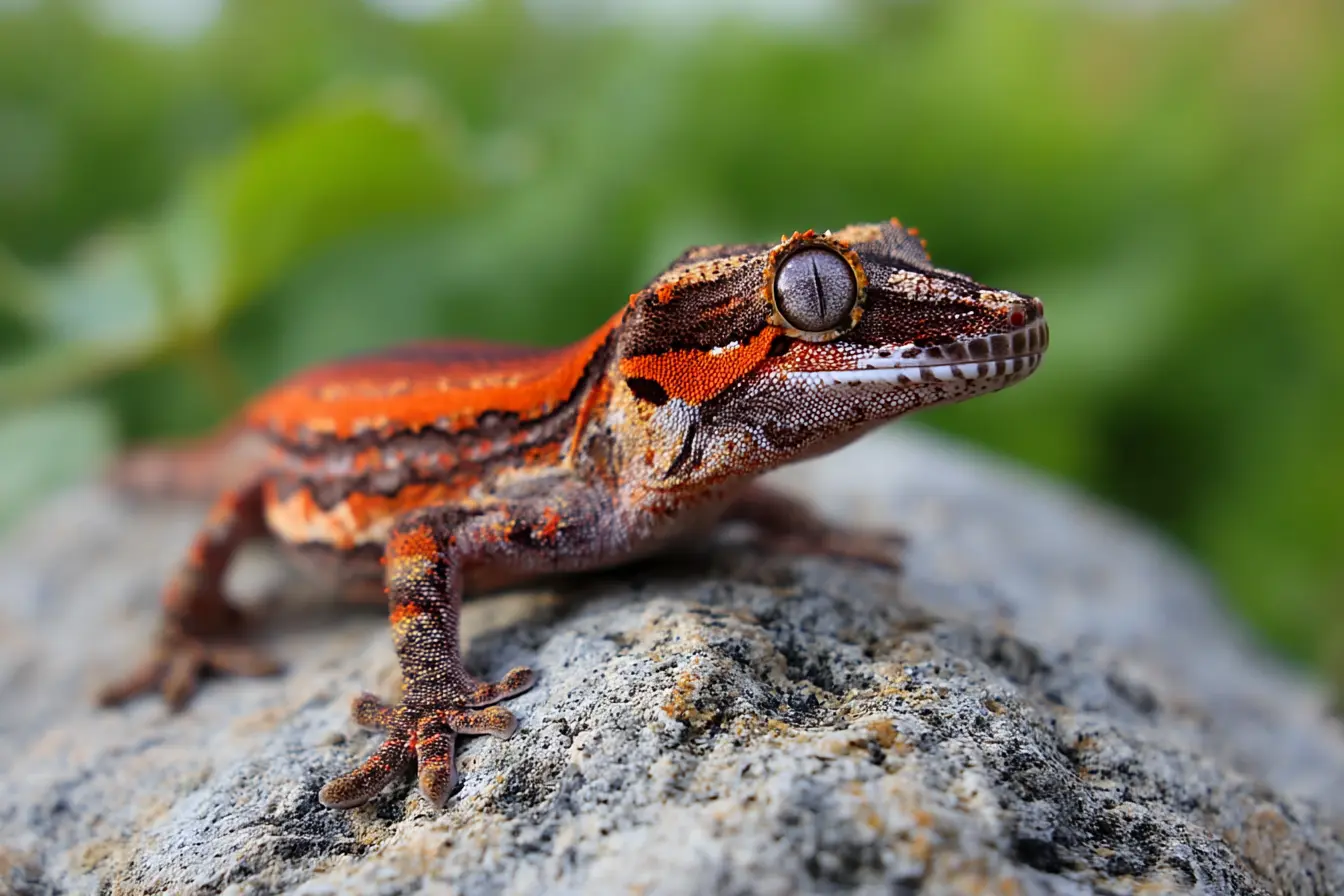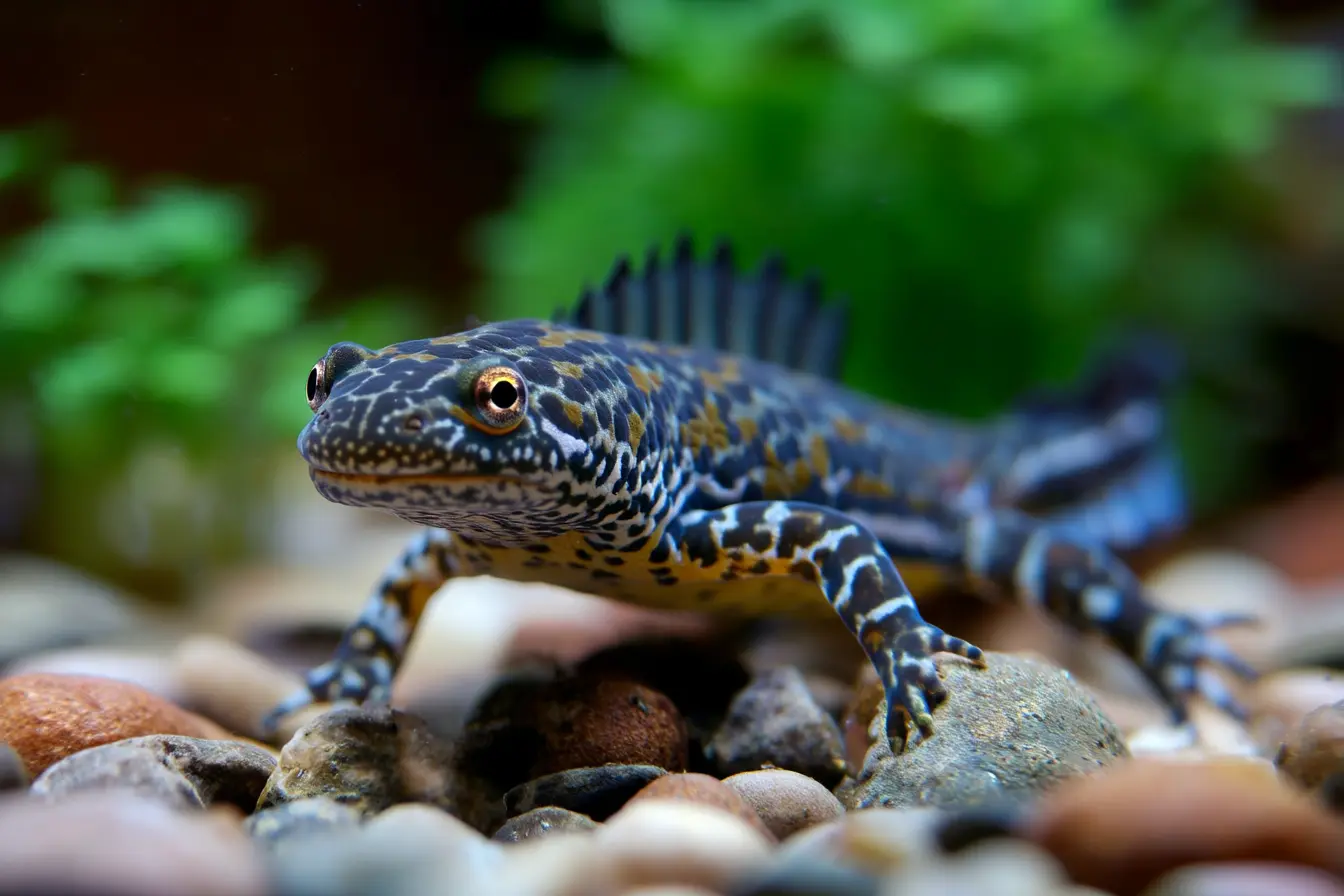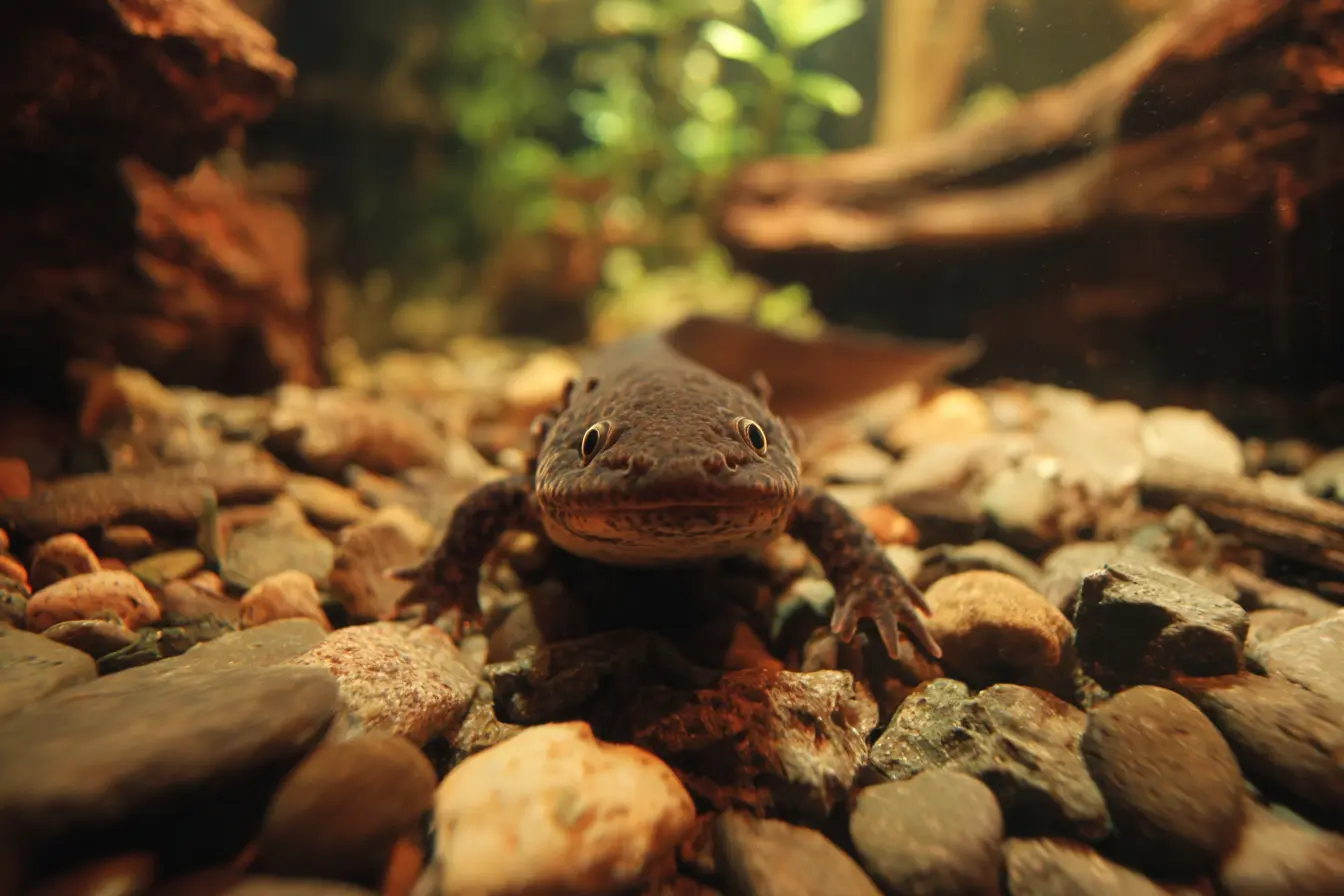
Keeping the Common Mudpuppy: A Comprehensive Guide
The common mudpuppy (Necturus maculosus) is a fascinating fully aquatic salamander native to North America. Known for its distinctive external gills, large size, and intriguing behaviours, the mudpuppy is a unique species that captivates amphibian enthusiasts. Unlike many salamanders, mudpuppies remain aquatic their entire lives and are one of the few amphibians to retain their larval features into adulthood—a condition known as neoteny.
This comprehensive care guide explores the key aspects of keeping a common mudpuppy, covering everything from physical traits and legal considerations to housing, diet, and breeding practices.
Physical Characteristics
Size
- Adult common mudpuppies are among the largest salamanders kept in captivity, reaching 20–48 cm (8–19 inches) in total length.
Lifespan
- With proper care, mudpuppies can live for 15–20 years, with some individuals reported to exceed this range in optimal conditions.
Colouration and Skin Texture
- Mudpuppies typically have a grey or brownish body, adorned with dark blotches or spots.
- Their most distinctive feature is their bushy, red external gills, which they use to breathe underwater.
- The skin is smooth and slippery, adapted for a life spent entirely in aquatic environments.
Sexual Dimorphism
- Males tend to have a swollen cloaca during the breeding season, while females remain relatively unchanged in appearance.
Legal and Ethical Considerations
Before acquiring a common mudpuppy, it is essential to research your local wildlife laws. Mudpuppies are protected in certain states and provinces due to declining wild populations, and collection from the wild is often illegal or heavily regulated.
Captive-bred mudpuppies are rare but always preferable. Ethical sourcing and responsible husbandry are key to supporting conservation efforts while enjoying this impressive amphibian.
Housing and Enclosure Setup
Common mudpuppies require a large, cool aquatic setup that mimics the rivers, lakes, and streams they naturally inhabit.
Enclosure Size
- A single adult requires at least a 100 litre (25 gallon) aquarium.
- Larger tanks (150–200 litres or more) are recommended for fully grown adults or groups, allowing ample swimming space.
Substrate
- Use fine sand or smooth gravel substrate to prevent injury to their sensitive skin and gills.
- Alternatively, a bare-bottom setup can simplify cleaning.
Hides and Decor
- Provide plenty of hiding places using smooth rocks, driftwood, and PVC tubes.
- Artificial caves or large aquatic ornaments also serve well as shelters.
- Live plants can be included but may be uprooted by larger individuals.
Temperature and Water Quality
- Temperature: 10–20°C (50–68°F) is ideal, with cooler temperatures preferred. Temperatures above 22°C (72°F) can cause stress or illness.
- Water Quality:
- Strong filtration is necessary due to mudpuppies’ messy eating habits.
- Maintain low ammonia and nitrite levels (zero is ideal), with nitrates under 40 ppm.
- Perform regular partial water changes (25–50% weekly) and use dechlorinated water.
Lighting
- Mudpuppies are nocturnal and do not require special lighting.
- Low ambient light is sufficient; intense lighting can cause stress.
- UVB lighting is unnecessary, but optional if keeping live plants.
Diet and Feeding
Mudpuppies are carnivorous predators with hearty appetites, consuming a variety of live or frozen prey.
Suitable Food Items
- Earthworms (a favourite staple)
- Bloodworms (frozen or live)
- Nightcrawlers
- Small fish (avoid feeder goldfish due to disease risk)
- Crayfish (with claws removed or small juveniles)
- Shrimp
- High-quality sinking carnivore pellets
Feeding Schedule
- Juveniles: Feed 4–5 times per week.
- Adults: Feed 2–3 times per week, adjusting quantity based on body condition.
- Feed in the evening or at night, aligning with their natural activity patterns.
Supplementation
- A varied diet ensures proper nutrition without the need for additional supplementation.
- Avoid fatty feeder fish or exclusively feeding one type of prey.
Behaviour and Handling
Mudpuppies are shy yet fascinating animals, making them ideal for dedicated amphibian keepers interested in observing natural behaviour rather than frequent interaction.
Behaviour
- Nocturnal and secretive, spending much of their time hidden in shelters.
- Active hunters at night, using both sight and smell to locate prey.
- Rarely interact with humans, but can become more visible once accustomed to a feeding routine.
Handling
- Handling should be avoided due to their sensitive skin and external gills.
- When necessary, use a soft, wet net for transfers and minimise time out of water.
Health and Common Problems
With the right environment, mudpuppies are robust animals, but they remain susceptible to water quality issues and stress.
Common Health Issues
- Gill damage: From poor water quality, high temperatures, or rough handling.
- Fungal infections: Often visible as white patches on the skin or gills, commonly caused by unsanitary conditions.
- Obesity: From overfeeding, particularly on high-fat foods.
- Stress: From improper temperatures, excessive light, or lack of hides.
Preventative Care
- Keep water temperatures low and stable.
- Maintain pristine water quality through filtration and regular water changes.
- Provide a varied, species-appropriate diet.
- Ensure ample hiding spaces to reduce stress and encourage natural behaviours.
Breeding Common Mudpuppies
Breeding mudpuppies in captivity is rare and challenging due to their specific environmental triggers and large space requirements.
Breeding Triggers
- Breeding typically occurs in winter when water temperatures drop.
- Simulating a seasonal temperature cycle may encourage reproductive behaviours.
Reproduction
- Males deposit spermatophores which females pick up for internal fertilisation.
- Females lay clusters of eggs under rocks or logs, guarding them until they hatch.
Larval Care
- Larvae remain fully aquatic, with external gills like adults.
- Feed larvae live foods such as daphnia or baby brine shrimp until they are large enough for bloodworms or chopped worms.
- Juveniles grow slowly and must be separated from adults to avoid predation.
Conclusion
The common mudpuppy is a fascinating species for the amphibian keeper seeking a unique, fully aquatic pet. Their large size, captivating gills, and low-maintenance interaction needs make them a fantastic display animal. While they require cool, clean water and a substantial aquatic setup, their care routine is straightforward once these needs are met.
Mudpuppies are best suited to keepers interested in observing natural behaviours rather than frequent handling. With proper care, they can thrive in captivity, offering years of enjoyment and a window into the hidden world of North America's aquatic amphibians.
Related Vets
Vets near you
Speciality vets
- Aquatics vet specialists
- Birds vet specialists
- Camelids vet specialists
- Cats vet specialists
- Cattle vet specialists
- Deer vet specialists
- Dogs vet specialists
- Equines vet specialists
- Exotic vet specialists
- Goats vet specialists
- Pigs vet specialists
- Poultry vet specialists
- Sheep vet specialists
- Small Mammals vet specialists
- Wild vet specialists
